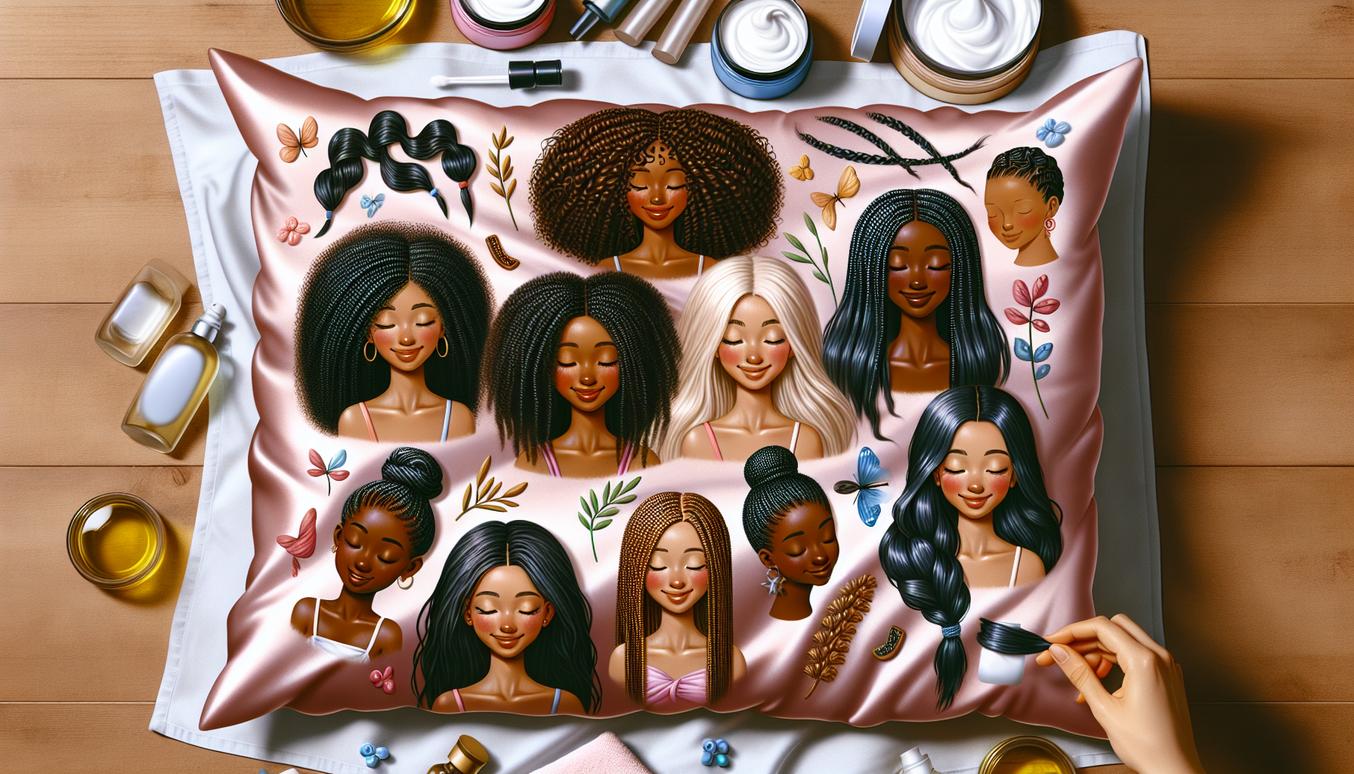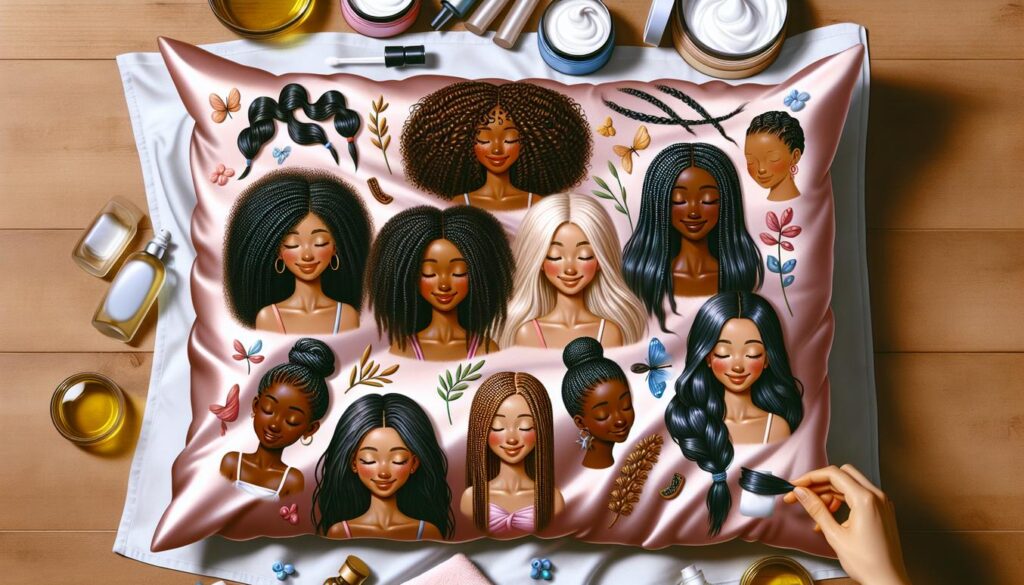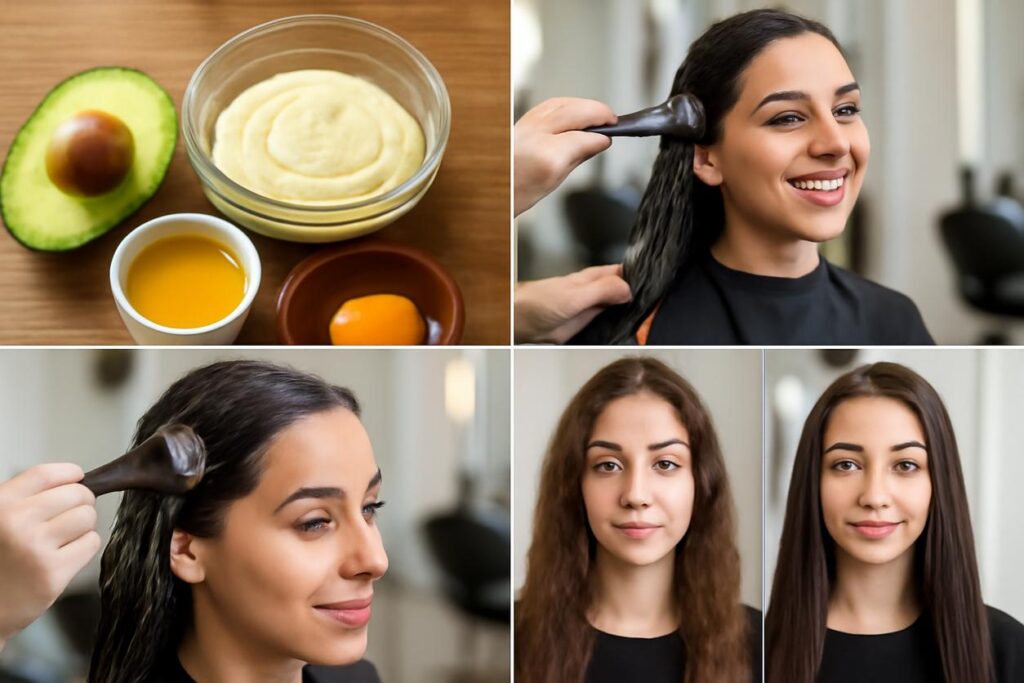Your Ultimate Guide to Overnight Hair Care: Wake Up to Healthier Hair in 2025
Table of Contents
- Introduction: Why Your Nighttime Routine is a Game Changer
- How Hair Repairs During Sleep: The Simple Science
- Assess Your Night Needs: A Hair Type Checklist
- Pre-Bed Preparation: Cleansing, Hydration and Timing
- Protective Night Styles Explained Step-by-Step
- DIY Overnight Treatments: Recipes and Safety Notes
- The Right Materials: Pillowcases, Scarves and Tools
- Overnight Product Guide: What to Use and What to Avoid
- Common Mistakes That Undo Overnight Gains
- Your Seven-Night Sample Routine for Visible Improvement
- Troubleshooting: Breakage, Oiliness, Tangles and Frizz
- Maintenance: How to Track Progress and Adjust Your Routine
- FAQs and Expert Myth-Busting
- Conclusion and Your Quick Bedtime Checklist
Introduction: Why Your Nighttime Routine is a Game Changer
We invest so much time and effort into our daytime skincare routines, but what about our hair? As we sleep, our bodies enter a powerful regenerative state. This is the perfect opportunity to repair, nourish, and protect our hair from the daily stressors of styling, pollution, and environmental damage. A dedicated overnight hair care routine is not an indulgence; it is a fundamental strategy for achieving long-term hair health. By making a few simple adjustments before bed, you can minimize friction, lock in moisture, and wake up with hair that is smoother, stronger, and more manageable. This guide will empower you to build a sustainable nighttime plan tailored to your specific hair needs, transforming your sleep into a productive beauty treatment.
How Hair Repairs During Sleep: The Simple Science
Just like your skin, your scalp has a rhythm. At night, blood flow to the hair follicles increases, delivering more oxygen and essential nutrients needed for growth and repair. This is also when your body’s production of melatonin, a hormone known for its antioxidant properties, peaks. This process helps combat oxidative stress from free radicals that can damage hair follicles. Furthermore, giving your hair a break from heat styling and tight hairstyles allows the cuticle—the hair’s outer protective layer—to rest and recover. An effective overnight hair care regimen capitalizes on these natural biological processes, creating the ideal environment for your hair to rejuvenate itself while you rest. For more on how nutrition impacts this process, see the guidance on a healthy diet from the NHS.
Assess Your Night Needs: A Hair Type Checklist
The first step to effective overnight hair care is understanding your hair’s unique profile. What works for coily hair might overwhelm fine, straight hair. Use this checklist to identify your primary needs.
Hair Type and Primary Nightly Goal
- Straight Hair (Fine to Medium): Your main goal is to prevent oiliness and tangles without weighing hair down. You need volume preservation and minimal product use.
- Wavy Hair (Type 2a-2c): You aim to reduce frizz and enhance your natural wave pattern. Your focus is on light hydration and gentle protection to avoid disrupting your waves.
- Curly Hair (Type 3a-3c): Your priority is moisture retention and curl definition. You need to protect your curls from getting crushed, stretched out, or frizzy.
- Coily Hair (Type 4a-4c): Your mission is to maximize moisture and prevent breakage. Your hair is prone to dryness, so sealing in hydration and using protective styles are critical.
- Thinning or Damaged Hair: Your focus is on minimizing stress on the scalp and follicles. You should avoid tension and use treatments that support scalp health and strengthen existing strands.
Pre-Bed Preparation: Cleansing, Hydration and Timing
What you do right before you style your hair for the night is just as important as the style itself.
Cleansing and Detangling
Always start with hair that is free of major tangles. Use a wide-tooth comb or your fingers to gently detangle from the ends up to the roots. Avoid brushing hair when it’s wet, as it’s most fragile. If you must, use a brush designed for wet hair. Going to bed with wet hair can promote fungal growth on the scalp and lead to breakage, so aim to have your hair at least 80% dry.
Hydration and Sealing
This is where you apply your chosen leave-in conditioners, serums, or oils. Apply products sparingly, focusing on the mid-lengths and ends where hair is oldest and driest. If you have an oily scalp, avoid applying products near the roots. Give products a few minutes to absorb before you begin styling for the night.
Protective Night Styles Explained Step-by-Step
Protective styles are the cornerstone of any good overnight hair care routine. They reduce friction against your pillowcase, prevent tangles, and help preserve your hairstyle.
The Loose Braid
Best for: Straight, wavy, and long curly hair.
- Step 1: Gently gather your dry or slightly damp hair to one side or at the nape of your neck.
- Step 2: Divide your hair into three equal sections.
- Step 3: Cross the right section over the middle one, then cross the left section over the new middle one. Repeat this pattern down the length of your hair.
- Step 4: Braid loosely to avoid creating tension on your scalp. Secure the end with a soft tie, like a scrunchie, leaving at least an inch of hair at the bottom.
Twists
Best for: Wavy, curly, and coily hair.
- Step 1: Section your hair into two, four, or more parts, depending on its thickness.
- Step 2: Take one section and divide it into two equal strands.
- Step 3: Twist the two strands around each other from root to tip.
- Step 4: Secure the end. Twists are excellent for clumping curls together and minimizing frizz.
The Pineapple
Best for: Curly and coily hair.
- Step 1: Flip your head forward, allowing your curls to hang down.
- Step 2: Loosely gather all of your hair into a high ponytail on the very top of your head.
- Step 3: Secure it with a gentle hair tie or scrunchie. Your hair should look like the top of a pineapple. This protects your curls by keeping them from being crushed as you sleep.
DIY Overnight Treatments: Recipes and Safety Notes
Nourish your hair with simple, effective treatments you can make at home. Always perform a patch test on a small area of your skin 24 hours before applying any new mixture to your scalp or hair.
Lightweight Hydrating Mist (For Fine to Wavy Hair)
- Recipe: Mix 1 part aloe vera juice with 3 parts distilled water in a spray bottle. Add 2-3 drops of lavender essential oil for a calming scent.
- How to Use: Lightly mist your hair before putting it into its protective style.
Nourishing Oil Sealant (For Curly and Coily Hair)
- Recipe: Blend 2 tablespoons of jojoba oil with 1 tablespoon of castor oil. Jojoba oil mimics the scalp’s natural sebum, and castor oil helps seal moisture.
- How to Use: Warm a few drops between your palms and smooth over your hair, focusing on the ends, after applying a leave-in conditioner.
Strengthening Hair Mask (For All Types, Use Weekly)
- Recipe: Mash half an avocado and mix with one tablespoon of olive oil or coconut oil.
- How to Use: Apply to your hair from roots to tips. Cover with a shower cap and leave on for 30 minutes before bed, then rinse thoroughly. For a deeper treatment, you can leave it on overnight (with a secure cap and a towel over your pillow) and wash it out in the morning. Explore more on the science of natural treatments via this research overview.
The Right Materials: Pillowcases, Scarves and Tools
The surfaces your hair touches matter. Investing in the right materials is a simple yet high-impact part of overnight hair care.
- Pillowcases: Swap your cotton pillowcase for silk or satin. Cotton absorbs moisture from your hair and its rougher texture creates friction, leading to frizz and breakage. Silk and satin provide a smooth, low-friction surface that your hair can glide over.
- Hair Ties: Avoid elastic bands with metal clasps. Opt for scrunchies (ideally made of silk or satin), spiral hair ties, or soft fabric ties that won’t snag or create harsh creases in your hair.
- Bonnets and Scarves: For those with curly, coily, or very frizz-prone hair, a satin-lined bonnet or a silk scarf provides an extra layer of protection. This keeps your hair securely contained and maximally protected from friction.
Overnight Product Guide: What to Use and What to Avoid
What to Use
- Leave-in Conditioners: Provide a sustained dose of moisture and help with detangling. Look for lightweight formulas if you have fine hair.
- Hair Serums and Oils: Great for sealing the hair cuticle, adding shine, and taming frizz. A little goes a long way.
- Scalp Treatments: If you have concerns like dryness or thinning, a targeted overnight scalp serum can work wonders while you sleep.
What to Avoid
- Heavy, Greasy Products: Avoid thick butters or heavy oils if your hair is easily weighed down, as this can lead to buildup and limp strands.
- Products with High Alcohol Content: Drying alcohols (like alcohol denat) can strip moisture from your hair overnight.
- Styling Products with Strong Hold: Gels and strong-hold mousses can make hair stiff and more prone to snapping as you move in your sleep.
Common Mistakes That Undo Overnight Gains
Are you putting in the effort without seeing results? You might be making one of these common mistakes.
- Styling Too Tightly: Protective styles should be loose. Too much tension can cause stress on your follicles, leading to traction alopecia over time. If your style feels tight or pulls, redo it.
- Sleeping on Wet Hair: As mentioned, this is a major cause of breakage and potential scalp issues. Ensure your hair is mostly dry.
- Using Too Much Product: Overloading your hair with product can lead to buildup, which makes hair look dull and greasy. Start with a small amount and add more only if needed.
- Forgetting Your Ends: The ends of your hair are the oldest and most fragile part. Always make sure they are moisturized and securely tucked into your protective style.
Your Seven-Night Sample Routine for Visible Improvement
Ready to start? Here is a sample one-week plan. Adjust based on your hair type and wash schedule.
| Night | Action Plan |
|---|---|
| Night 1 (Wash Day) | After washing, apply a leave-in conditioner to damp hair. Let it air dry to 80% and style into two loose braids. |
| Night 2 | Gently undo braids. Lightly mist with your DIY hydrating spray to refresh waves. Re-braid or twist. |
| Night 3 | Apply a small amount of oil to your ends. Style hair in a pineapple. |
| Night 4 | Undo pineapple. Scalp massage for 5 minutes with fingertips. Put hair in a loose bun on top of your head. |
| Night 5 (Treatment) | Apply a nourishing DIY mask or a targeted scalp treatment. Protect with a shower cap. |
| Night 6 (Wash Day) | Wash out treatment. Repeat Night 1 routine. |
| Night 7 | Assess your hair. Is it more hydrated? Less frizzy? Re-style in your preferred protective style (e.g., twists). |
Troubleshooting: Breakage, Oiliness, Tangles and Frizz
- If you wake up with more breakage: Check the tension of your hairstyle and your hair tie. Ensure you are sleeping on a silk or satin surface. Breakage is a sign of stress.
- If your scalp feels oily in the morning: You may be using too much product or applying it too close to your roots. Try using a dry shampoo at the roots before bed.
- If your hair is still tangled: Your protective style might not be secure enough. Try creating more sections (e.g., four braids instead of two) to better control the hair.
- If frizz is still a problem: Your hair may need more moisture. Ensure you are using a leave-in conditioner and sealing with a light oil. A satin bonnet or scarf can be a game-changer for frizz. For a deeper dive into hair health, you can review hair health research and seek dermatology advice for persistent issues.
Maintenance: How to Track Progress and Adjust Your Routine
Consistency is key for effective overnight hair care. Keep a simple hair journal for a few weeks. Each morning, note down your hair’s condition: Is it soft? Frizzy? Defined? Oily? This will help you identify which techniques, products, and styles are giving you the best results. Don’t be afraid to experiment. Maybe your wavy hair prefers a loose bun over a braid, or perhaps your coily hair thrives with the LOC (Liquid, Oil, Cream) method before being twisted. Listen to your hair and adjust your routine accordingly.
FAQs and Expert Myth-Busting
Can I use my regular conditioner as an overnight leave-in?
It’s not recommended. Rinse-out conditioners are formulated differently and can cause buildup or irritation if left on for too long. Stick to products specifically designed to be left in the hair.
Does trimming my hair make it grow faster?
This is a common myth. Hair grows from the scalp, so trimming ends doesn’t affect the rate of growth. However, regular trims remove split ends, which prevents breakage from traveling up the hair shaft, helping you retain length and making hair appear healthier and thicker.
Is it bad to go to bed without doing anything to my hair?
For many, yes. Leaving your hair loose, especially on a cotton pillowcase, exposes it to a full night of friction, moisture loss, and tangling. Even a simple, loose braid can make a significant difference.
Conclusion and Your Quick Bedtime Checklist
Embracing a dedicated overnight hair care routine is one of the most effective ways to protect and improve your hair’s health over time. By understanding your hair type, using gentle techniques, and choosing the right materials, you turn 8 hours of sleep into an effortless and productive repair session. You don’t need a complex or expensive regimen—just consistency and a little bit of care.
Your Nightly Checklist:
- Detangle: Gently remove knots with fingers or a wide-tooth comb.
- Hydrate: Apply a light leave-in, serum, or oil to mid-lengths and ends.
- Style: Secure hair in a loose, non-restrictive protective style.
- Protect: Sleep on a silk or satin pillowcase, or wear a bonnet or scarf.






